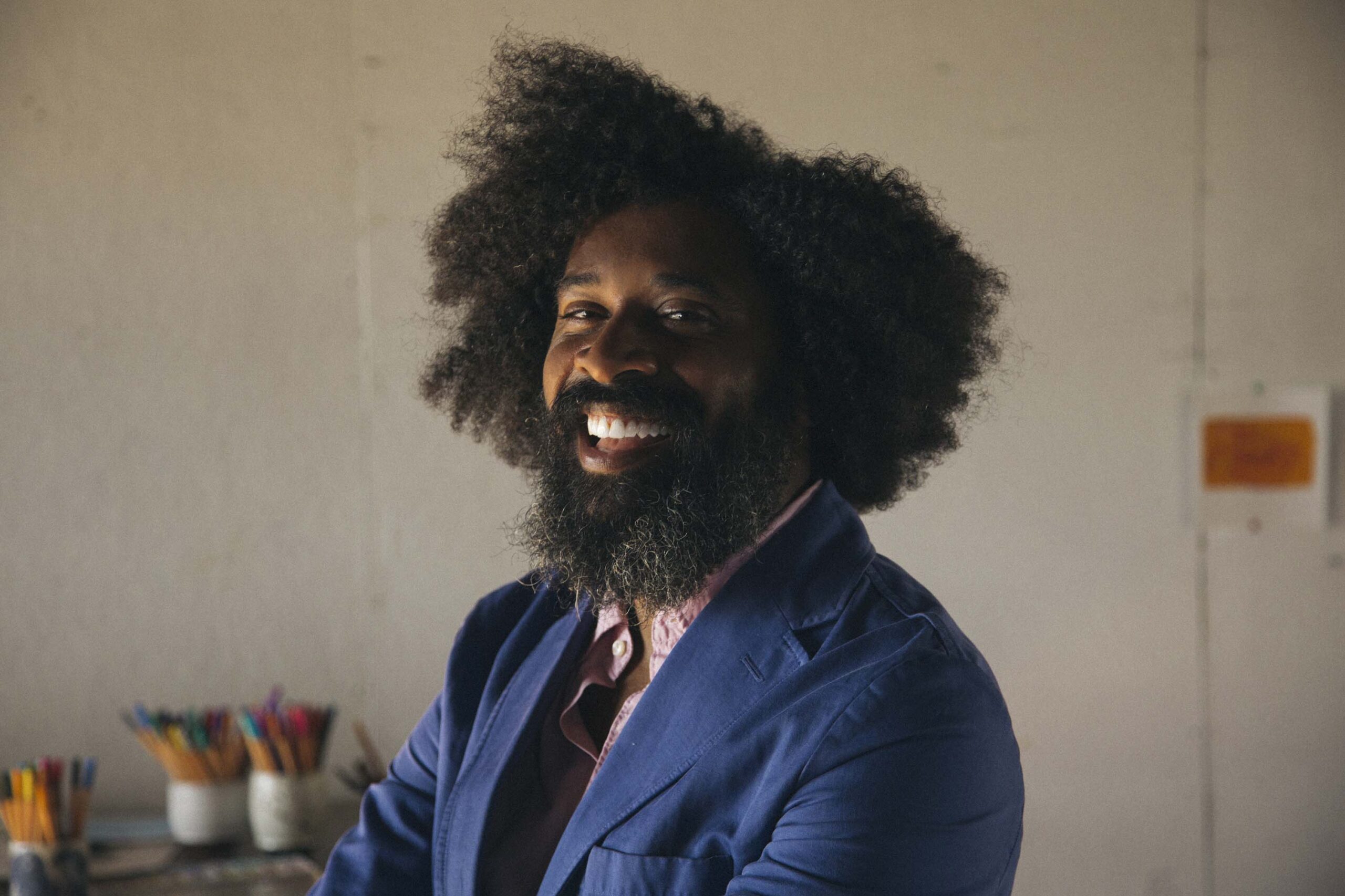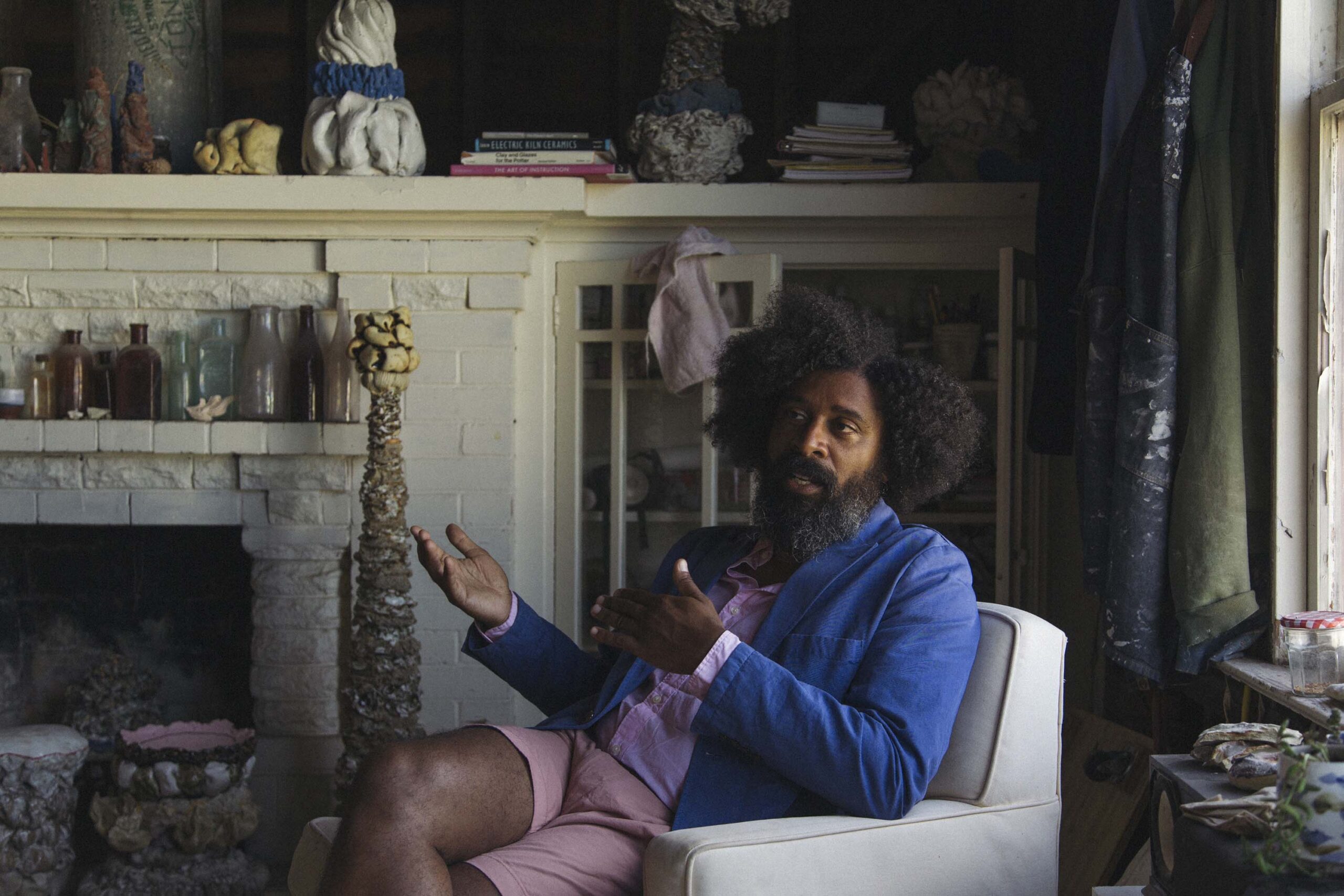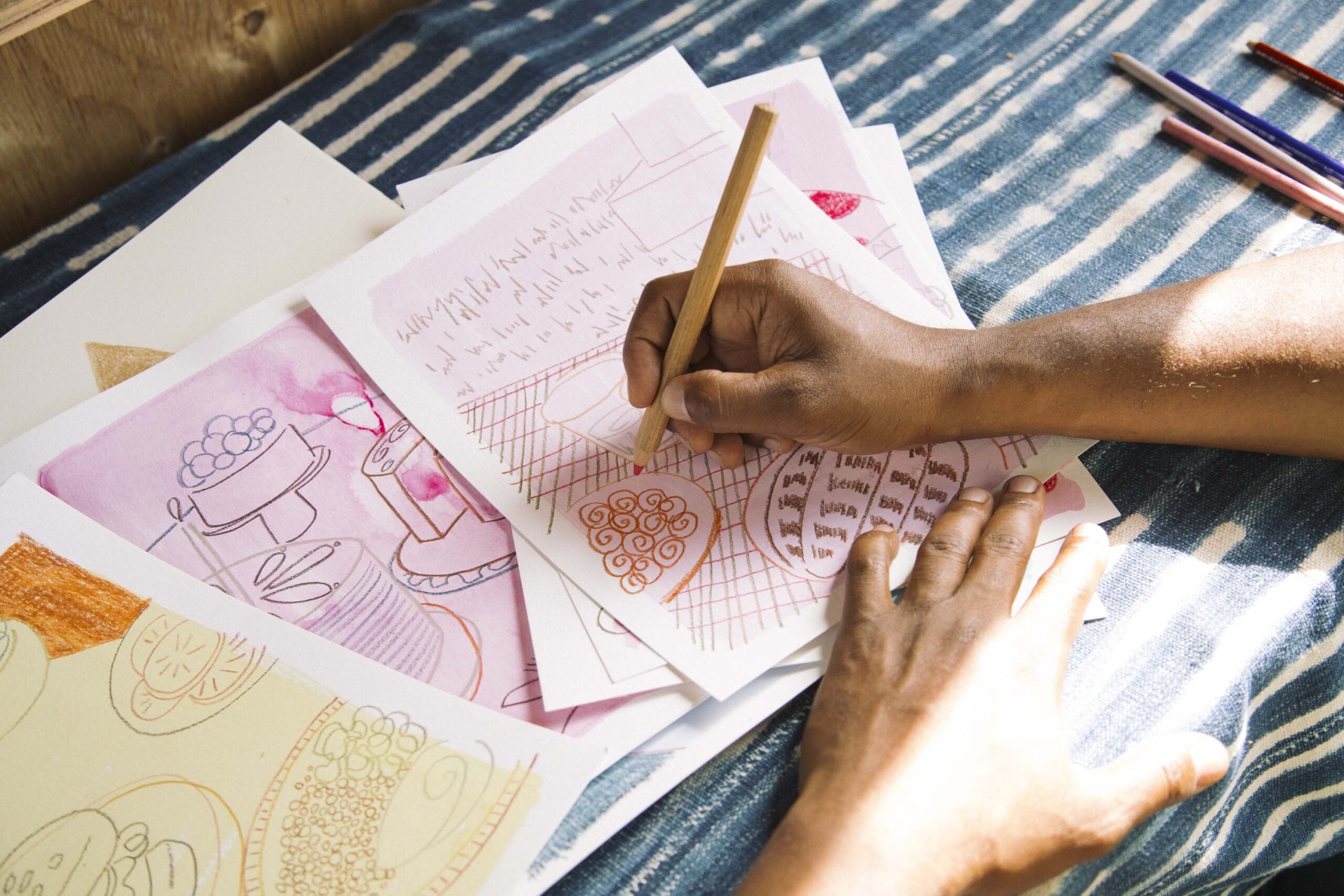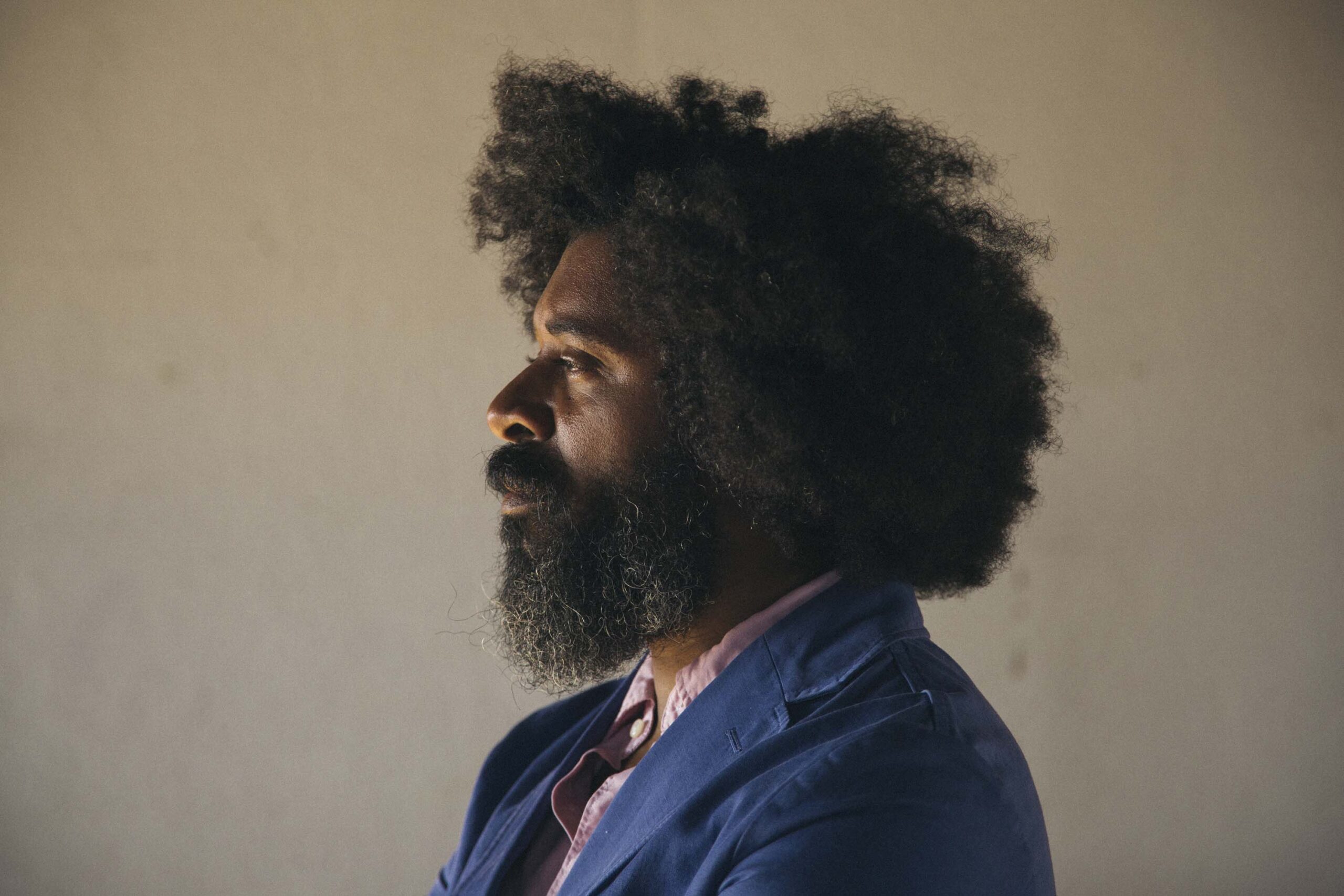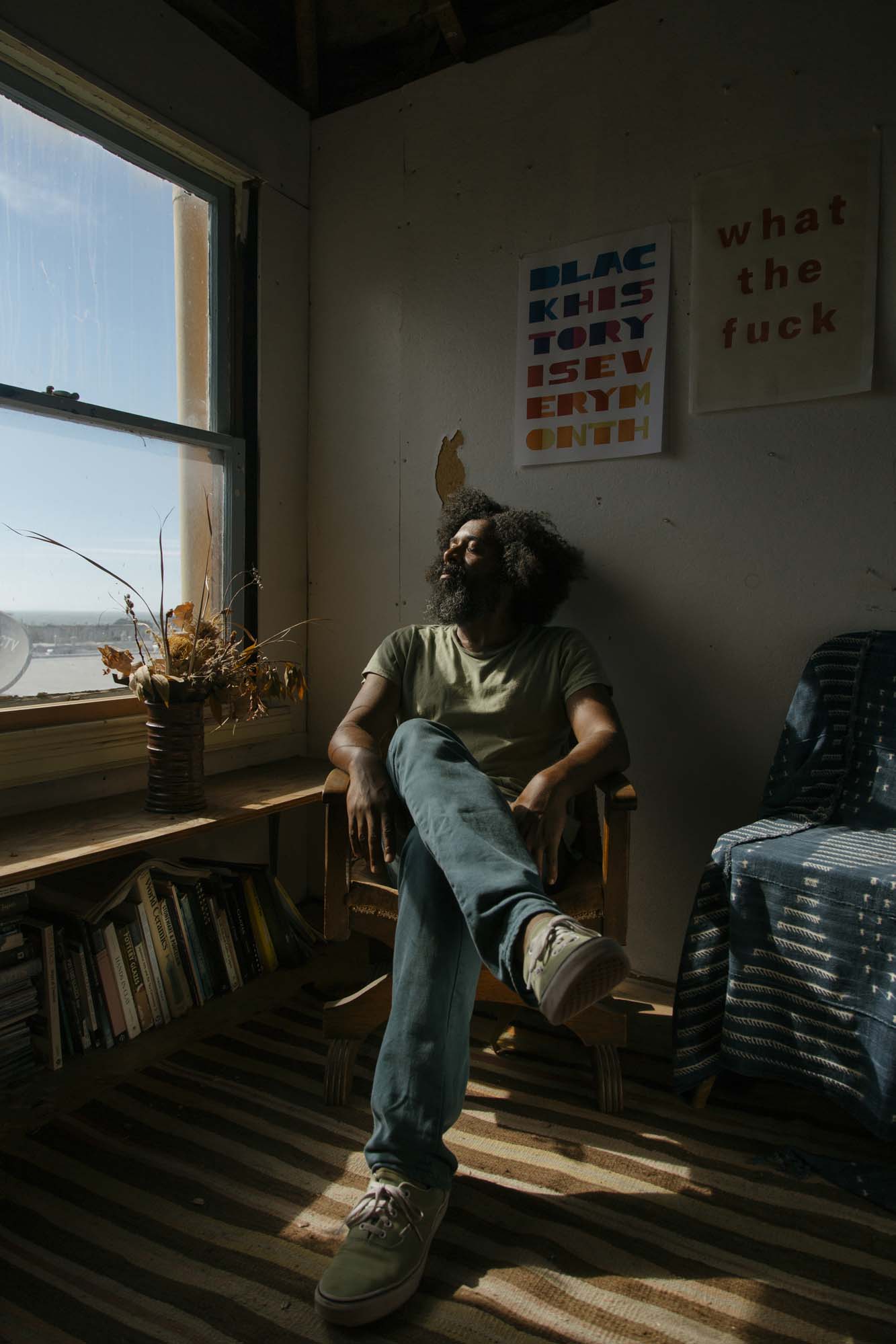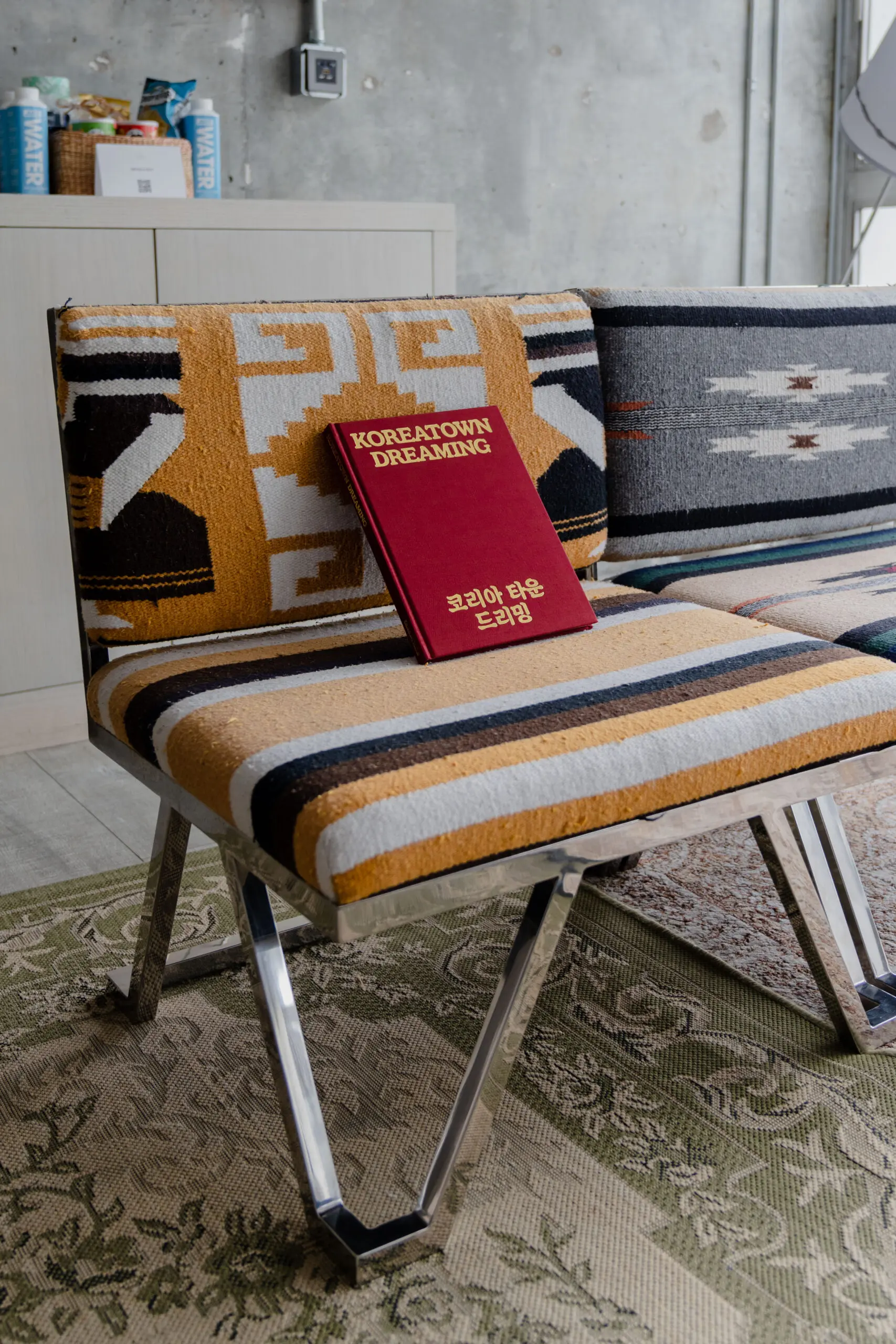Meet our neighbor, George McCalman
Words by Matthew Ininns
Images by Anna-Alexia Basile
It’s difficult to define George McCalman. Not because there’s not a plethora of words that describe him (there are), but because he does so many things with such direct intent.

Educated as a fine art painter with a focus on philosophy, McCalman defines himself as an artist and creative director. In practice, that means he illustrates, designs, and writes about the complex concepts he explores in his work.
It’s all complexity and exploration, really. For his new book, Illustrated Black History: Honoring the Iconic and the Unseen, McCalman married his “intuitive, organic style” with a clear vision on how to approach the depiction of undercelebrated black figures. Drawing from his vast editorial experience, McCalman showcases—through a myriad of visual mediums and a magazine-like voice—the unique story and personality of each subject.
During a spiritual and emotional journey to capture each individual, McCalman believes that he was able to communicate directly with his subjects and channel a part of them back into life. The book’s four-year journey took place in his art studio—on an otherworldly upper floor of an Outer Sunset house he shares with a ceramicist.
The book’s heroes are primarily artists and women. This was McCalman’s specific intent, an embrace of his bias, one gathered living “as a black gay man raised in matriarchy.” Because existing historical texts focus on white male stories, McCalman instead honors many of the black women behind history’s most important movements. For example, instead of depicting her famous husband, he shines light on Amy Ashwood Garvey’s crucial role in the Pan-African movement. He also includes controversial figures like Ben Carson—not to celebrate a person’s actions, but to start a larger conversation about balancing both the accomplishments and flaws of the iconic and unseen.

Illustrated Black History, and really all of McCalman’s work, draws from a rich practice with language. Sometimes a single word on a poster is brought to life (see Matriarchy for the San Francisco Chronicle), inviting contemplation of the meaning and power of the word itself. McCalman’s lettering was inspired by the hand-painted signs he saw everywhere growing up in Grenada: Each sign’s varied lettering, color, and brush stroke gave clues to the artist’s origin and character. Today, he spends half his year in Grenada with his 99-year-old grandmother. “She’s my favorite person,” he beams.
At eight years old, McCalman moved from Grenada, a tiny Afro-Caribbean island, to the cultural melting pot of Brooklyn, New York, with his mother. When he moved to San Francisco twenty years later, he was shocked at the lack of diversity—of blackness, in particular. What was once a more varied city with a strong black community, San Francisco had for years displaced non-white groups through housing discrimination, neighborhood redevelopment, racially restrictive covenants, and redlining.
While McCalman found success in the Bay Area corporate world, he was often disappointed to be the only black person in the room, even in industries and communities that claimed to promote diversity. So George did what he does: He got creative.
Alongside Zana Woods, McCalman started Black Brunch Club, which brings together black artists and professionals for monthly potluck gatherings. By surrounding each other with the black community McCalman and his peers found lacking, they built a powerful network to support each other. The group continues to grow and bolster its community, says McCalman. “It’s taken on a mind of its own, and that was exactly the plan.”

Illustrated Black History and Black Brunch Club are big improvements, but McCalman knows there is much more work to be done to honor the unseen black people in San Francisco and the Bay. The area’s celebration of progressive and forward-thinking ideals sits at tangled odds with its greater issues like this lack of diversity.
McCalman is undeterred. Drawing from his artistic intuition, he continues to excavate and explore the stories of his own complex communities.
~
Illustrated Black History: Honoring the Iconic and the Unseen is now on sale and can be found at Bay Area bookstores like Green Apple.
